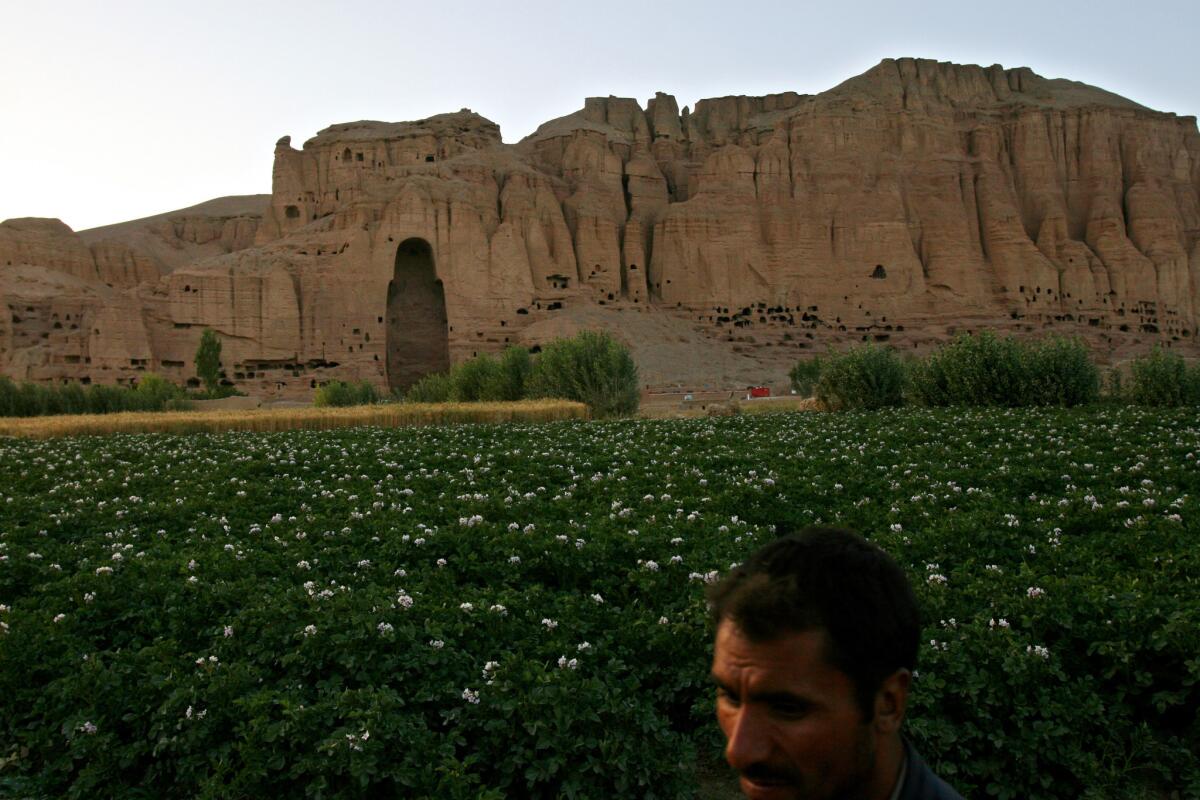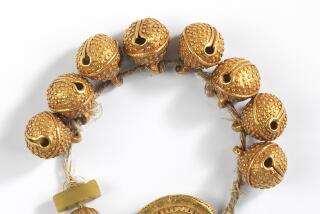Islamic State’s smashing of artifacts latest act of cultural hatred

- Share via
When Islamic State extremists took sledgehammers to what may have been centuries-old treasures in the Iraqi city of Mosul, they were indulging in a long and ruinous tradition of intolerance that has destroyed priceless artifacts around the planet.
From the Taliban’s 2001 dynamiting of 6th century Buddha figures sculpted into a mountainside in Bamian, Afghanistan, to the Ansar Dine militants’ smashing of UNESCO-designated cultural milestones three years ago in Timbuktu in northern Mali, fundamentalist Islamic radicals have made it their mission to destroy what they see as idolized false gods.
Fundamentalist Salafist Muslims have also attacked Sufi heritage sites in Libya and Egypt in recent years, and disrespect for cherished places of worship, museums, libraries and artworks has hardly been limited to the bellicose adherents of antiquated sharia law.
Nazi Christians looted Jewish homes of paintings and sculptures, many still residing in the museums and galleries to which the thieves and their brokers sold the seized treasures. Tourists, collectors and excavators for more than a century have pilfered souvenirs from the Angkor Wat temples in Cambodia and Incan and Mayan monuments in Mexico and Central America.
For as long as wars have ravaged the world, victorious troops have taken cultural trophies from the vanquished, including some U.S. troops and contractors who “liberated” Baghdad from Saddam Hussein’s rule in 2003.
But the purloined can be returned once the lengthy legal battles and investigations of provenance are over, as occurred in late 2013 when Cornell University gave back to Iraq a vast collection of 4th century cuneiform tablets depicting daily life in the cradle of civilization, stone chronicles believed to have been looted during the 1991 Persian Gulf War.
The Islamic militants’ attacks on religious symbols stir more passionate outrage, as their work with axes, drills, truncheons and firearms often reduces the statues and artifacts to rubble.
Such appears to be the case with Islamic State’s video-taped destruction in Mosul, Iraq’s second-largest city and home to a priceless trove of Assyrian and Akkadian statues at the National Museum dating to the 7th century BC.
The five-minute video that appeared Thursday on the Internet opens with militants ripping protective wrapping off statues. A bearded man appears, explaining that the artifacts are depictions of “pagan gods” that “were worshiped instead of Allah” as the camera lingers over parts of the museum.
“It is easy for us [to destroy these artifacts], and we do not care, even if they cost billions of dollars,” the militant says before the statues are pushed and kicked off pedestals by fighters with unabashed glee. They then take to them with sledgehammers and electric drills. An Islamic nasheed, or chant, plays in the background.
Another video shows the militants apparently burning thousands of books and ancient poetry anthologies in a bonfire on a major thoroughfare in Mosul.
The authenticity of the videos could not be independently verified, but their depictions were true to the fanatic battles waged against what the Salafists consider an offense against their god.
Islamic State espouses a particularly harsh interpretation of sharia, or Islamic law, with punishments that include amputations, crucifixions and beheadings. It also considers many artifacts, landmarks and even graves as a threat that will lead to paganism.
Antiquities expert Eleanor Robson of University College London deplored the attacks in a BBC interview as “the cultural equivalent of the worst of the beheading videos,” referring to Islamic State signature recordings of their beheadings of captives, including Western journalists and aid workers.
Follow @cjwilliamslat for the latest international news 24/7
Special correspondent Nabih Bulos and Times staff writer Patrick J. McDonnell in Sana, Yemen, contributed to this report.
More to Read
Sign up for Essential California
The most important California stories and recommendations in your inbox every morning.
You may occasionally receive promotional content from the Los Angeles Times.













